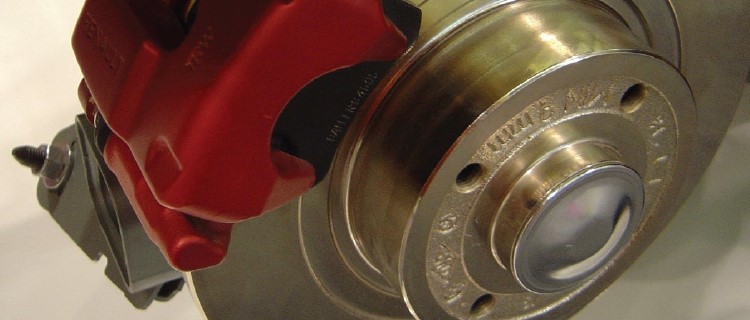TIRECRAFT Tips – Brake Pads
July 22, 2020
Uncategorized

TIRECRAFT Tips – What are Brake Pads?
Properly functioning brakes are one of the most important components of your vehicle. Every driver wants to feed confident and comfortable at the wheel knowing their vehicle will stop when it needs to. Part of the brake component on your vehicle is Brake Pads.
What are Brake Pads?
Brake pads are a part of your vehicle’s brake system. They are located between your bake caliper (the part that clamps down, slowing the tires’ rotation) and brake drum. Brake pads are affixed to the caliper and when the pedal is pressed the caliper and pads apply pressure to the rotors. Rotors are flat discs located on the wheels. The pressure and friction created from this is what slows down your vehicle.
Think of a bicycle for example. When the brakes are applied, the pad grips the side of the bicycle wheel. When this happens it creates friction that slows and stops the bike. The same method is used with vehicles.
Why Replace Brake Pads?
Brake pads are meant to absorb a lot of heat and energy during braking, taking a lot of wear. Because of this, they usually need the most attention to maintain your vehicle’s braking system. Although brake pads are made with special materials to handle the friction, every time you engage your vehicle’s brakes the brake pads slowly wear down. As they wear down the performance will decrease. Some indicators that may mean your brake pads are worn out include:
- Screeching or Squealing Noise: as the brake pads thin it may expose the metal strip in them. When friction is applied to the exposed metal it will cause a screeching or squealing noise.
- Scraping or Deep Grinding Noise: a deeper grinding noise may mean the brake pads are worn down on the metal backing. This would mean the metal on the pad is squeezed directly against the steel brake discs. This can reduce your stopping power and can lead to further damage.
- Indicator Lights: some vehicles have an indicator light on the dashboard that will signal when it’s time to replace your vehicle’s brake pads. Check your owner’s manual to see if your vehicle has this feature.
- Less than ¼” of Brake Pad: you can also do a visual check on your vehicle to see if your brake pads need replacing. You can do this without removing the wheels by looking through your tire spokes and you should see your brake pad compressed against your brake rotor. If the pad is less than ¼” thick (3mm) it is recommended you have your brakes inspected.
If your vehicle is experiencing any of these symptoms, call your local TIRECRAFT for a brake inspection.
How Long do They Last?
Brake pads can last anywhere from 50,000 km – 115,000 km. The lifespan really depends on a number of different factors. Things that may affect how long your brakes pads last could include:
- Driving Climate: if you live in an area with lots of mountains or hills, your brakes may wear down quicker than if you lived on flat land.
- Traffic Level: if you tend to drive most often in heavy commuter traffic with lots of stopping, your brakes may wear down quicker.
- Type of Brake Pad: there are 4 types of different bake pad materials (Organic, Semi-metallic, Metallic and Synthetic) and each type can wear differently on your vehicle.
- Heavy Foot: if you are a driver who brakes at the last minute, or slams on the brakes hard regularly, that will wear down the brake pads at a faster rate.
How to Make Them Last Longer?
It is best to have your brake pads checked every time you get an oil change. If you want to extend the life of your brake pads, consider some of these tips:
- Slow Down: driving fast can mean braking fast. Braking at fast speeds generates a lot of friction on the brake components, which will increase the wear and tear on your brake pads.
- Don’t Ride Your Brakes: Every time you press the brake pedal it puts friction on your brake components. Be aware of how many times you tap the brake pedal while driving. For example if you are going down a hill, don’t push the brake pedal all the way down. Instead try coasting or down shifting if you are driving manual.
- Use “Engine Braking”: Similar to coasting down a hill, if you know that you will have to brake shortly, say for an upcoming stop sign, take your foot off the gas pedal at a further distance from the stop sign. When you take your foot off the accelerator it disengages the engine and lightens the pressure on your brakes. Engine braking allows you to slow your car without applying the brakes. This means less wear from heat and friction on your brake system.
- Lighten Your Load: Talking about your car of course! If you are driving around with extra weight in your vehicle it makes your vehicle heavier and thus more friction is needed to slow down the vehicle when moving. Consider removing extra weight from your trunk, back seat and/or roof that you may not always need.


